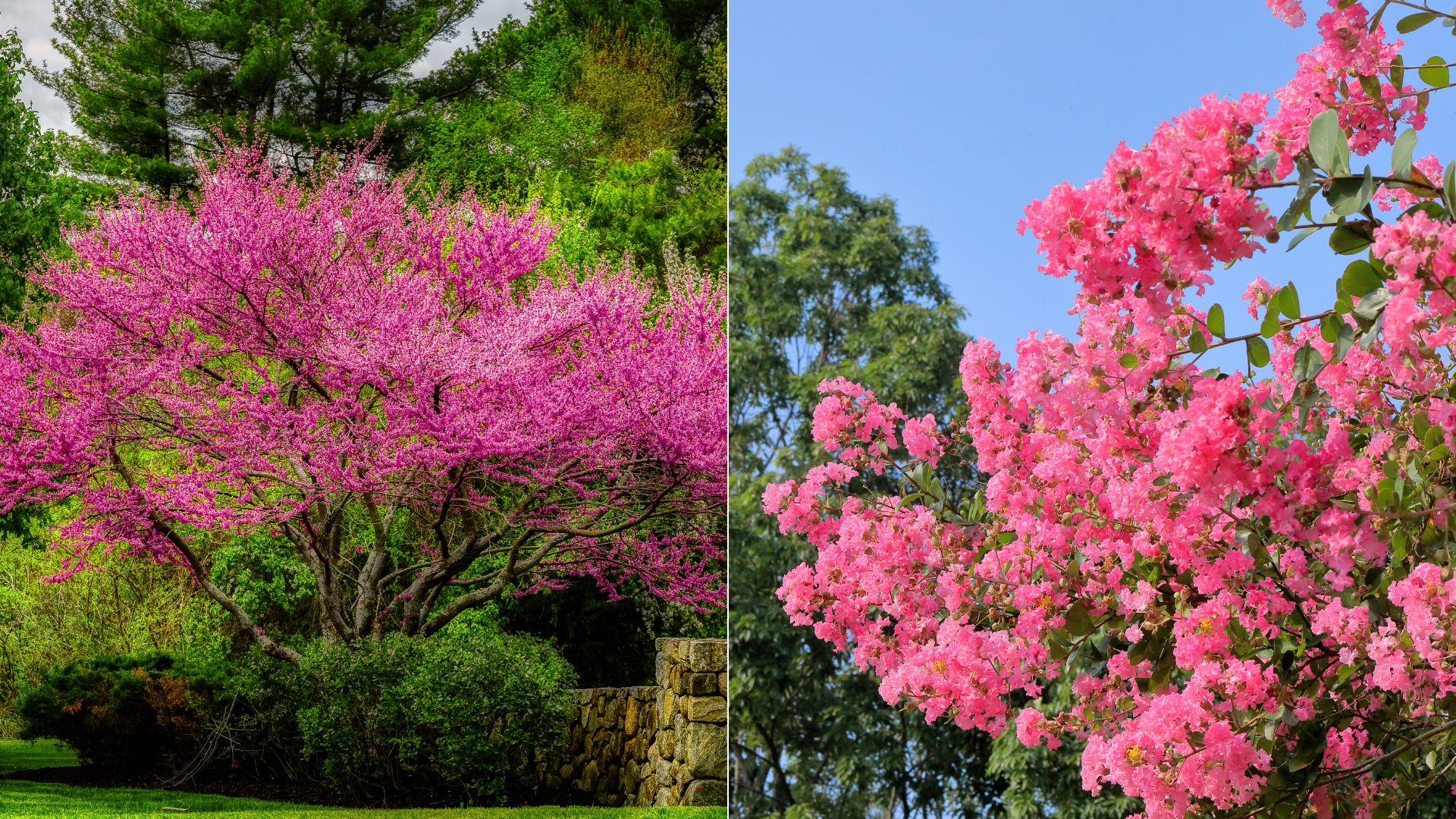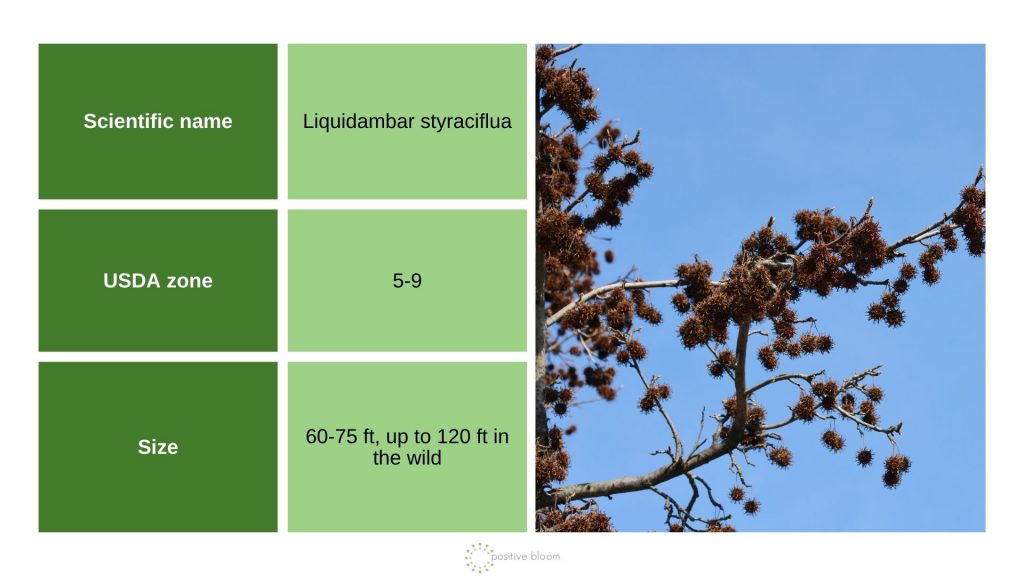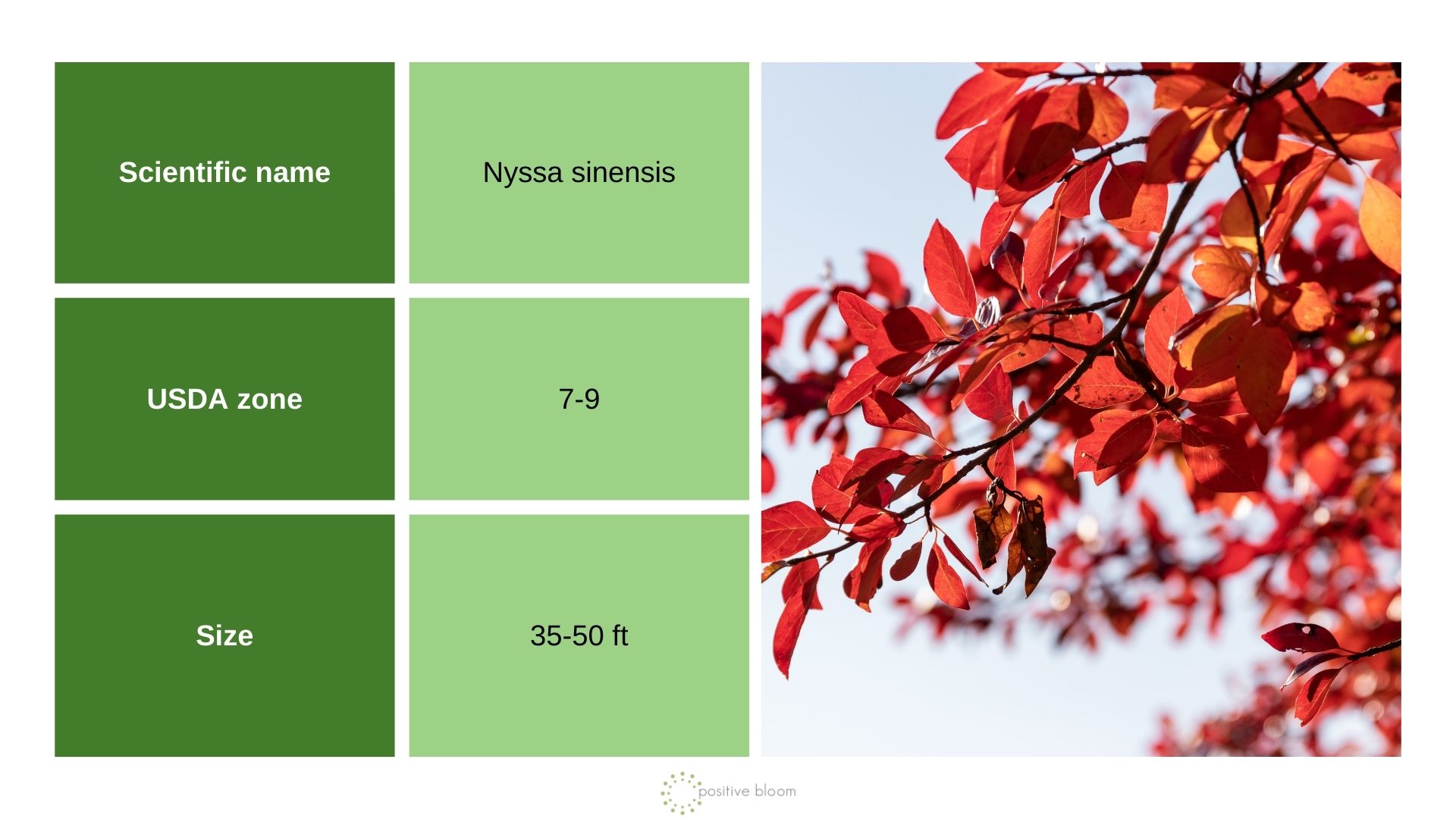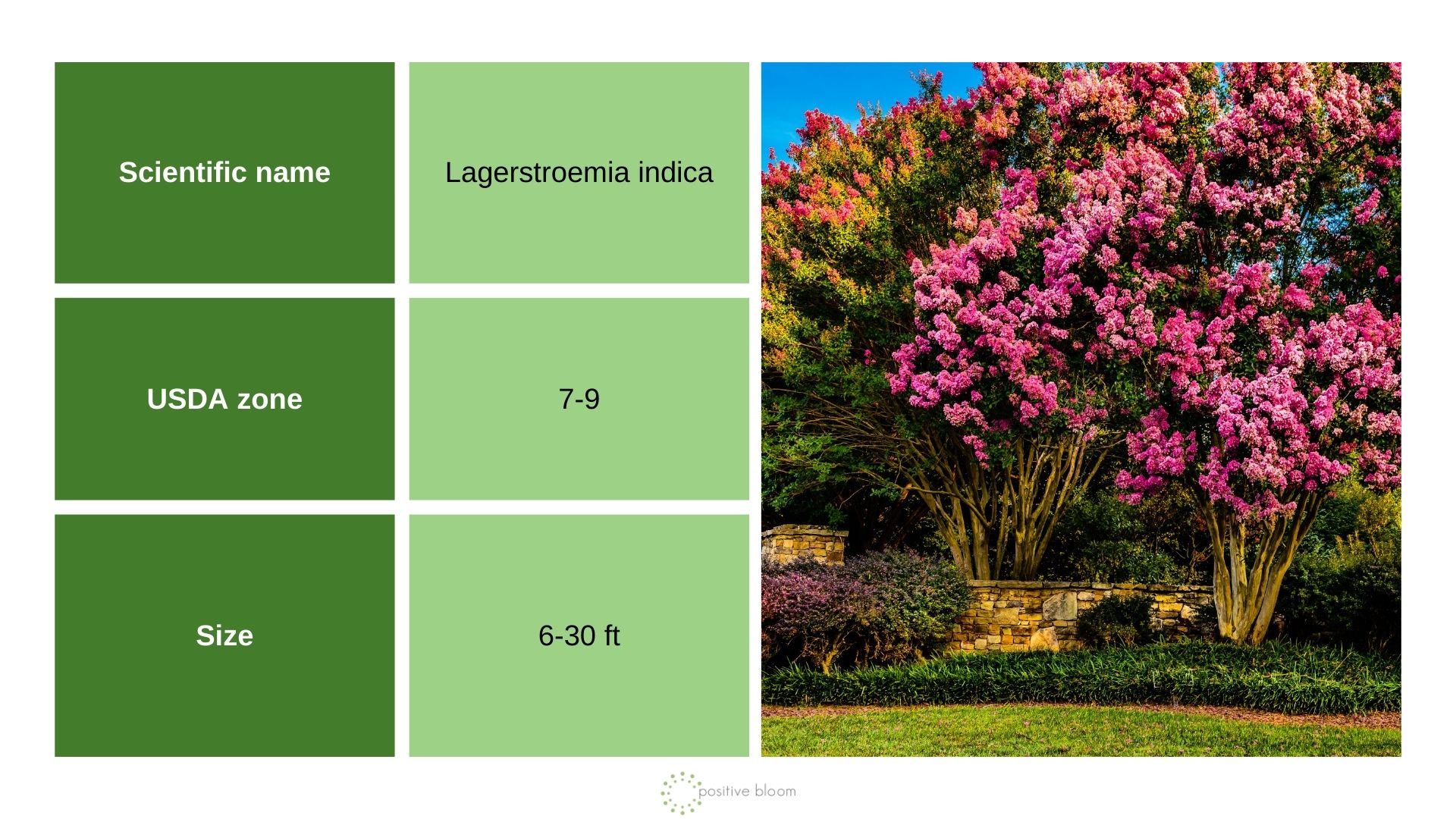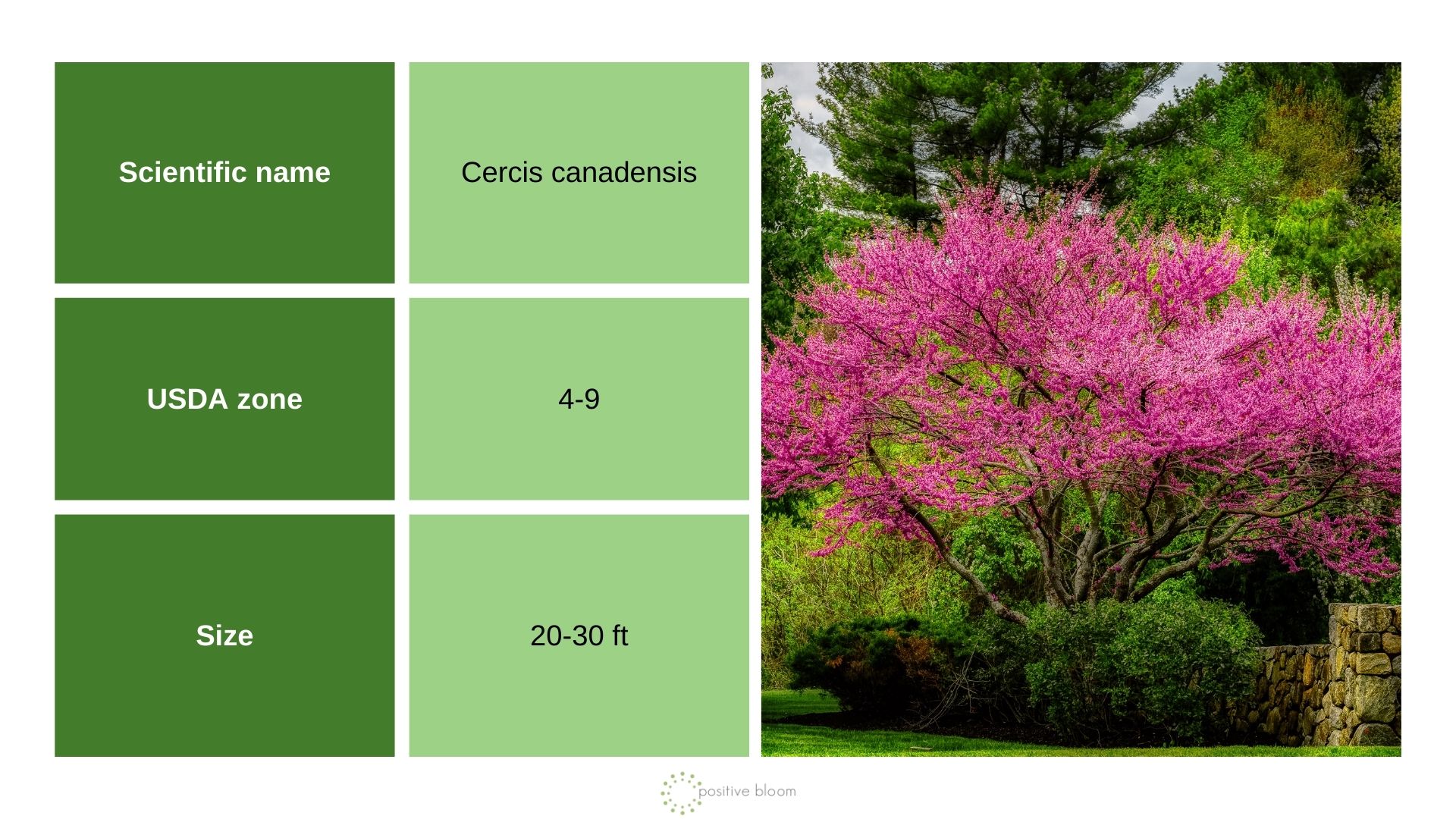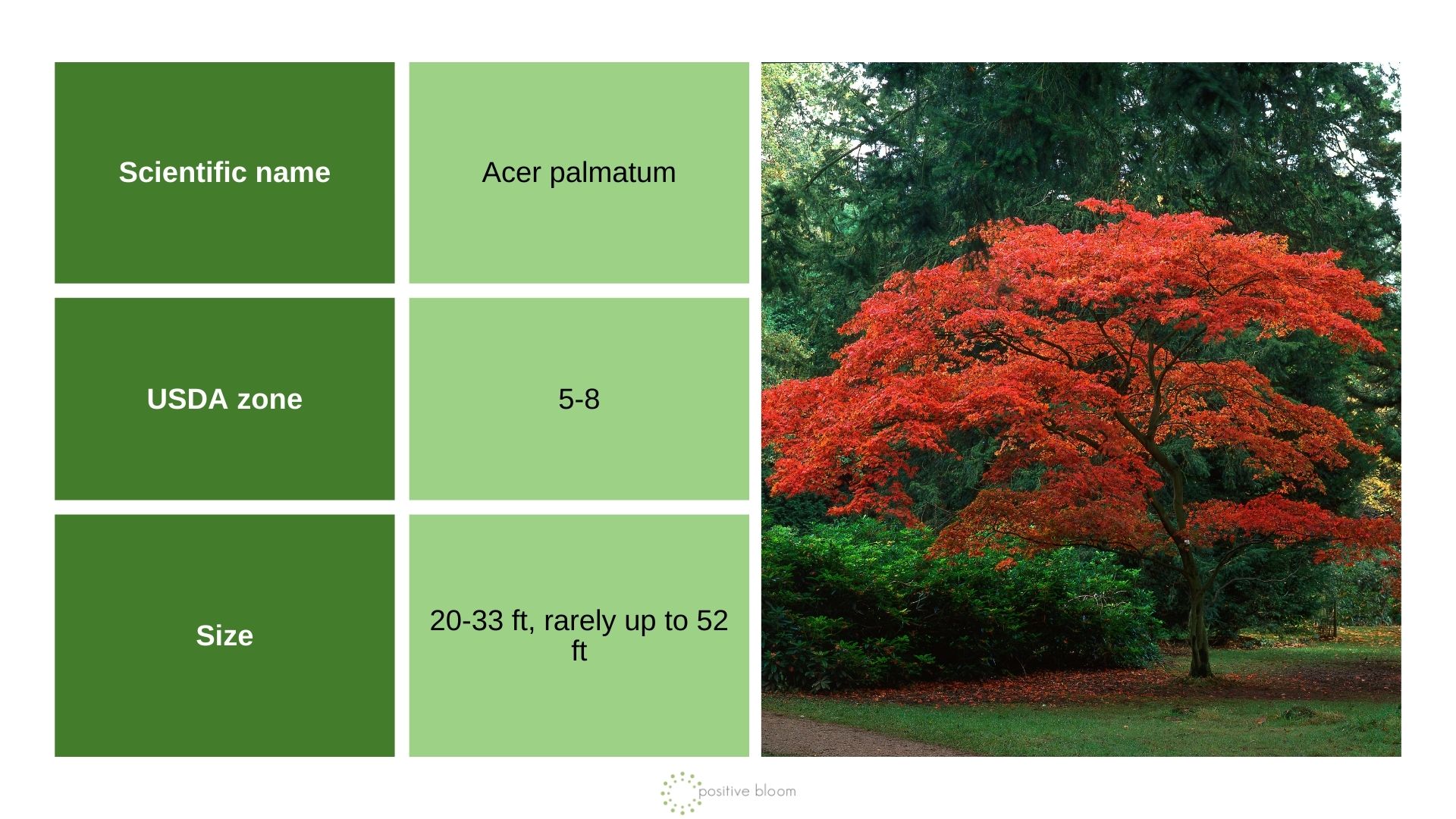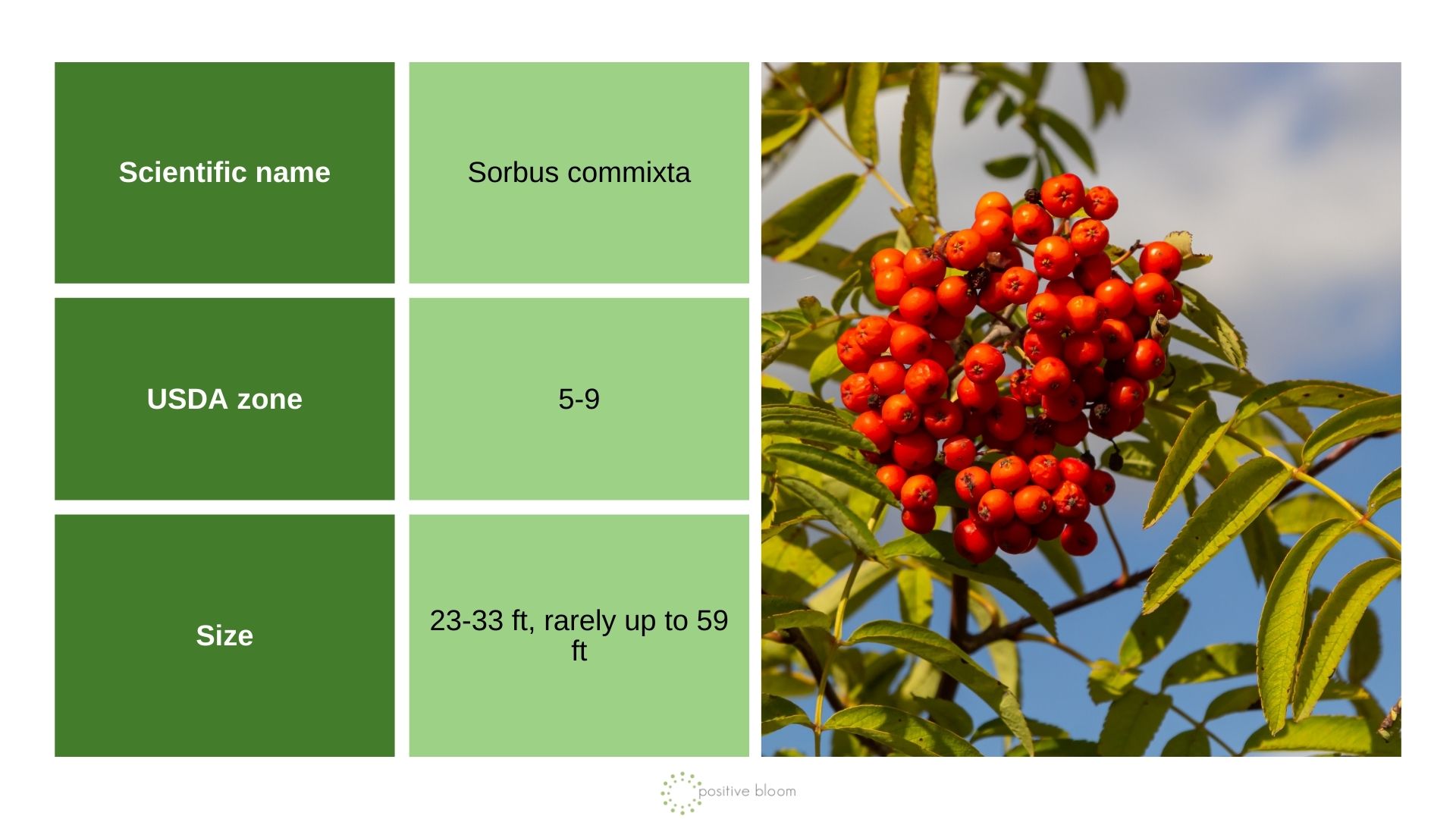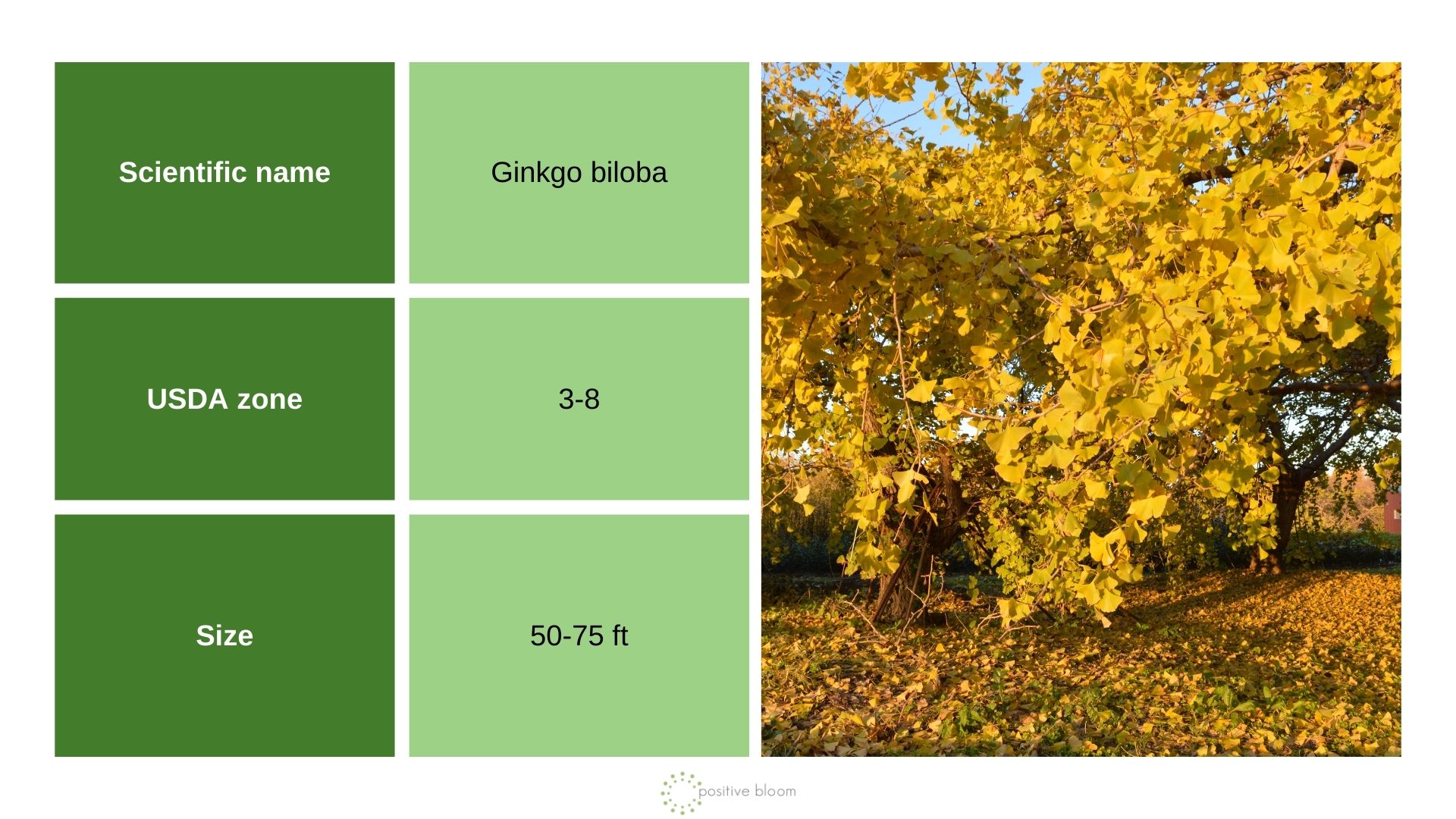Trees with crimson, gold, or burgundy colors in fall can do so much for your garden. The reds, yellows, purples, and bronzes are reminiscent of childhood countryside visits and planting them in your own backyard will keep you in this state forever.
You can choose pretty much any deciduous tree, but there are some of them with the most vibrant and luscious colors.
But know that it is the sun exposure, temperature, and soil type that determine how vivid the colors will be.
Choose the best one for your hardiness zone and enjoy their fall colors for many years to come.
Let’s get started!
1. American Sweetgum
This large North American native is a perfect addition to your suburban garden, especially in a corner where it gets full sun or partial shade.
The star-like foliage of American sweetgum offers an array of fiery colors – orange, red, yellow, and even purple.
As the temperatures begin to cool down, these shades come to life and usually outlast all other leaves in the vicinity.
But leaves will eventually fall off, and that’s when the fruit of this tree, and its spiky sweet gum balls and light silvery bark with deeper colored ridges, come into play.
And spring interest isn’t any worse. The deep green crown will provide you with welcoming shade all the way through fall.
So, learn how to plant a tree, purchase an American sweetgum sapling in your local nursery, and plant them this fall as soon as they go dormant.
These trees are extremely low-maintenance, but they do have an extensive root system, so don’t plant them near your home or driveway. You can always choose more compact cultivars such as dwarf ‘Gumball’ or ‘Oconee.’
2. Chinese Tupelo
There are numerous benefits of planting more trees in your garden, such as providing shelter to wildlife and providing you leaves you can use as compost.
Not to mention the gorgeous deciduous colors in spring.
For this reason, adding a colossal Chinese tupelo shouldn’t be something you dread just because it can get rather wide. Its unique conical shape is perfect for large gardens or alleys, especially when it showers you with red, orange, and golden hues in fall.
It thrives in full sun locations and loves well-draining and moist soils. However, it will flourish pretty much anywhere if it has room to spread, so don’t plant it too close to your home.
The good news is that it isn’t a demanding tree and you won’t have to prune it unless some branches are broken, diseased, or otherwise damaged.
Its ornamental bark, dark limbs, and pyramidal shape add structure to any slightly larger garden. And if you don’t have enough room, you can alway go for more compact varieties such as ‘Jim Russel.’
Scientific name: Nyssa sinensis
USDA zone: 7-9
Size: 35-50 ft
3. Crepe Myrtle
Crepe myrtle is the perfect shrub or small tree for tiny gardens. It resists frost extremely well, exhibits the best fall color when planted in full sun, and can flourish in almost any substrate as long as it’s well-draining.
When fall comes knocking at your door, the deep green summer leaves will alter their shades to red, orange, and yellow.
But that’s not nearly all this tree has to offer. It will produce endless white, pink, purple, or red flowers between early and late spring, depending on the variety, and stay in bloom for 3-4 months.
Round seed pods follow the flowers and last throughout winter.
And finally, the crepe myrtle bark can also provide interest. It is slightly pink-gray, smooth in texture, and almost feels exfoliating.
So, if you want this tree in your garden, know that the best time to transplant crepe myrtle is during the colder months of fall and winter.
Scientific name: Lagerstroemia indica
USDA zone: 7-9
Size: 6-30 ft
4. Eastern Redbud
Eastern or American redbud is a small tree with a shorter lifespan than most other hardwood trees, and yet it can still live up to 50-75 years, which is quite a lot!
It has a short trunk and a wide rounded treetop that turns golden in fall and brown in winter.
But spring is when it takes my breath away. It turns into an endless sea of light pink and deep red-purple flowers.
And as the summer approaches, flowers fade away and the calming greenery of heart-shaped foliage takes over.
The bark is another feature of this tree that provides visual interest. It is deep red-brown and fissured, while its cracks reveal cinnamon-orange insides.
Of course, there are numerous cultivars of eastern redbuds, but if you want a more compact variety with vibrant colors, consider getting a ‘Flame Thrower.’
Finally, redbud trees have their benefits and drawbacks. They are drought-tolerant and low-maintenance trees that require little pruning, but they are susceptible to pests and diseases.
And yet, they are compact, provide visual interest throughout the year, and nurture wildlife and pollinators.
I’d plant them in my backyard. Wouldn’t you?
Scientific name: Cercis canadensis
USDA zone: 4-9
Size: 20-30 ft
5. Japanese Maple
This tree is a popular garden addition due to its numerous cultivars that come in all shapes and sizes. You can even find them on the list of Japanese indoor plants as there are numerous dwarf varieties.
They also come in weeping, cascading, mounding, rounded, and upright forms, so there certainly is a Japanese maple for everyone.
Plant this tree in a location with partial shade or where it gets about 4 hours of direct sunlight because that will lead to the most vibrant mixture of yellow, orange, and red in fall.
The berry-like fruits of Japanese maples appear sometime in September or October and bring a vivid red shade to your fall garden.
Its bark is also striking. It’s usually green-gray and sometimes more textured or smooth, depending on the cultivar. But the real star of the show is the coral bark Japanese maple (‘Sango-Kaku’), which has red-coral bark that gives your garden color throughout the year.
And if that wasn’t enough to persuade you to get one of these beauties, they also bear a gorgeous flush of red, purple, or pink rounded flowers in late spring.
Scientific name: Acer palmatum
USDA zone: 5-8
Size: 20-33 ft, rarely up to 52 ft
6. Japanese Rowan
Japanese Rowan is one of the best Rowans for fall color. It grows slowly into a slender, upright form and is perfect for making a small front yard appear larger.
It takes about 20 years to reach a height of about 20 feet and it thrives in both full sun and dappled shade.
While it’s still young, its fern-resembling leaves turn from vibrant green to a mesmerizing combo of deep purple and orange-red. During this period, it carries colorful berry fruits that provide not only interest to your garden, but also a food source for birds late in the season.
And let’s not forget about its silver-gray bark. It becomes more and more fissured as the tree matures, giving this Rowan more character.
But don’t think that’s all this tree has to offer. It will shower you with an abundance of tiny white flowers come spring and will handle urban pollution quite well, so it’s perfect for more populous areas.
Scientific name: Sorbus commixta
USDA zone: 5-9
Size: 23-33 ft, rarely up to 59 ft
7. Maidenhair Tree
Also known as ginkgo, the maidenhair tree is famous for its golden shades in fall, fan-shaped leaves, low-maintenance, and tolerance of urban pollution.
Its round and pyramidal crown remains traditionally green throughout spring and summer, while turning a mesmerizing yellow in fall.
The bark is another feature of interest when it comes to the maidenhair tree. It is light gray, irregularly textured, and feels corky to the touch.
The ‘Autumn Gold’ cultivar is a particularly breathtaking one and will complement your red-shaded trees perfectly.
Maidenhair trees keep their fall attire for quite a long time and they flourish in cold climates. And if that wasn’t enough, they can tolerate salty soils and drought, so they’re perfect for coastal areas.
Ginkgo doesn’t require that much pruning, but if you want to remove some of the drooping branches as the tree matures, make sure to avoid these common mistakes when pruning trees and shrubs.
Scientific name: Ginkgo biloba
USDA zone: 3-8
Size: 50-75 ft

